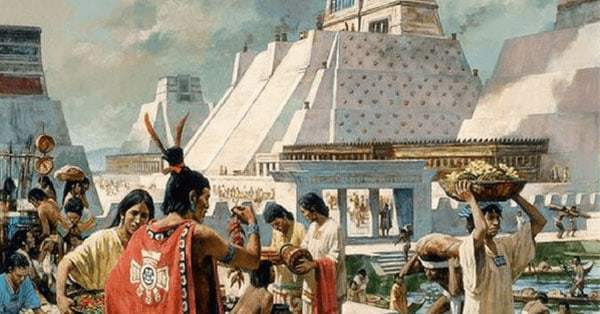“Even we who have seen these things with our own eyes, are yet so amazed as to be unable to comprehend their reality” Cortes in a letter to King Charles V. He was so overwhelmed by the grandeur of the great Aztec city that he was not sure how to best describe it to the king. He further says: “To convey to your Majesty a just conception of the great extent of this noble city of Tenochtitlan… would require the labor of many accomplished writers, and much time for the completion of the task.”
Mexico City, which exists on the ruins of Tenochtitlan is certainly an impressive city. It’s one of the 25 largest cities in the world and is the oldest capital city in the Americas, but it has little of the spectacle of its predecessor (no offense to those in Mexico).
Great cities of the Renaissance usually had one or two things to make them stand out; the canal streets of Venice, the impressive buildings of Istanbul, the history of Rome, but Tenochtitlan was unique and impressive in almost every way it possibly could be. It was splendid and rich, dark and disturbing, beautiful, imposing, luxurious, and deadly all at once. Let’s take a tour as the Conquistadors did when they first arrived in the Mexico Valley. We’ll have the tour bright and early on a temperate November morning in 1519.

Tenochtitlan: A Prophesied Floating Paradise
The most striking aspect of Tenochtitlan was its location in the middle of Lake Texcoco. The site of the city was prophesied to the wandering Mexica peoples as a location that would be signaled by an eagle eating a snake perched atop a cactus. This symbolism can be found on the modern Mexican flag today. Though not literally floating, it might have appeared so as the city completely engulfed the island it was built upon, so much so that squares of wooden stakes were driven into the lake bed and filled in with dirt to expand parts of the city. Approaching the city from the South, you would see a long, wide causeway across the water.
The long road would disappear into the bright buildings of the city as your eyes were drawn to the impressive temple complex in the center, the convergence of the three main causeways. Finally, your eyes might rise further to see the outlines of the Chiquihuite and Sierra de Guadalupe mountains towering over the city. to your left and right lay massive snow-capped mountains, forming a high, fertile valley.
Among the first things you would notice as you began to walk down into the lake-city is how refreshing the air would be. Being over 7,000 feet above sea level gives the air a crisp and cool feeling, about 10-15 degrees cooler than the coastal Veracruz. This would directly contrast with the stifling jungle you slogged through to get this far.
Walking down the causeway, you would likely notice one of the two lengthy aqueducts leading into the city. The bulk of Lake Texcoco was brackish (salty) water not good for drinking, though in the 15th century Montezuma I oversaw construction of a massive 8-mile long levee to keep Lake Texcoco mostly fresh water and separate from the more brackish lakes. The Aztecs bathed regularly and changed clothes quite often. The Emperor Montezuma II was said to change several times a day and rarely, if ever, did he wear the same outfit twice. With the levee and aqueducts, the Aztecs could enjoy cool mountain spring water and even the poorest could bathe daily.

